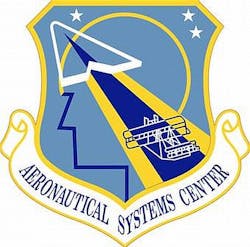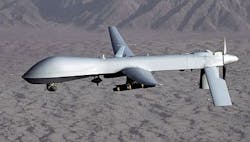Raytheon-led team to continue development of UAV-based hyperspectral sensor to find hidden objects like IEDs
WRIGHT-PATTERSON AFB, Ohio, 2 Nov. 2012.Multispectral sensors designers at the Raytheon Co. Space and Airborne Systems segment in McKinney, Texas, will move ahead with developing a new sensor for unmanned aerial vehicles (UAVs) able to see objects on the ground not visible to the human eye, such as hidden roadside bombs or illicit opium crops by detecting their spectral signatures.
Officials of the Air Force Aeronautical Systems Center (ASC) at Wright-Patterson Air Force Base, Ohio, announced plans this week to award a sole-source contract to Raytheon to continue development and support of the Airborne Cueing and Exploitation System-Hyperspectral, otherwise known as ACES-Hy.
The hyperspectral sensors contract, which will be from 2012 to 2016, is for ACES-Hy engineering development, integration onto the MQ-1 Predator medium-endurance UAV, testing, sensor procurement, training, and field maintenance.
The ACES-Hy hyperspectral sensor, can detect light across the electromagnetic spectrum to enable military surveillance experts to detect the composition of specific objects based on their spectral signatures. It is particularly effective at detecting improvised explosive devices (IEDs) by its ability to detect disturbed dirt.
Hyperspectral imaging collects and processes information from across the electromagnetic spectrum, unlike the human eye, which sees visible light in only three bands: red, green, and blue. Hyperspectral sensors divide the spectrum into many more bands, and includes non-visible spectra.
Air Force officials asked for approval to award a sole-source contract to Raytheon for continued ACES-Hy development in a justification-and-approval announcement (FA8620-12-G-4000-S0003) Tuesday. A dollar value of the contract has not been released.
Officials say they will ask Raytheon not only to continue with ACES-Hy sensor development, but also to qualify the ACES-Hy sensor processing subsystem.
Raytheon is prime systems integrator for ACES-Hy program, and leads team members L3 Integrated Optical Systems and ITT Exelis Space Computer Corp. The Air Force awarded a $2.1 million contract to ITT Exelis Space Computer in Los Angeles last month to upgrade ACES-Hy sensor processor. ITT Exelis in McLean, Va., acquired Space Computer last July.
ACES Hy detects optical bands the near-visible to the midwave infrared spectrum, which makes it suitable for deciphering camouflage and aerosols that might emanate from bomb-making locations.
More information on the upcoming contract is online at https://www.fbo.gov/spg/USAF/AFMC/ASC/FA8620-12-G-4000-S0003/listing.html.
For additional information contact Raytheon Network Centric Systems online at www.raytheon.com/businesses/ncs, ITT Exelis Space Computer Corp. at www.spacecomputer.com, or the Air Force ASC at www.wpafb.af.mil/asc.

